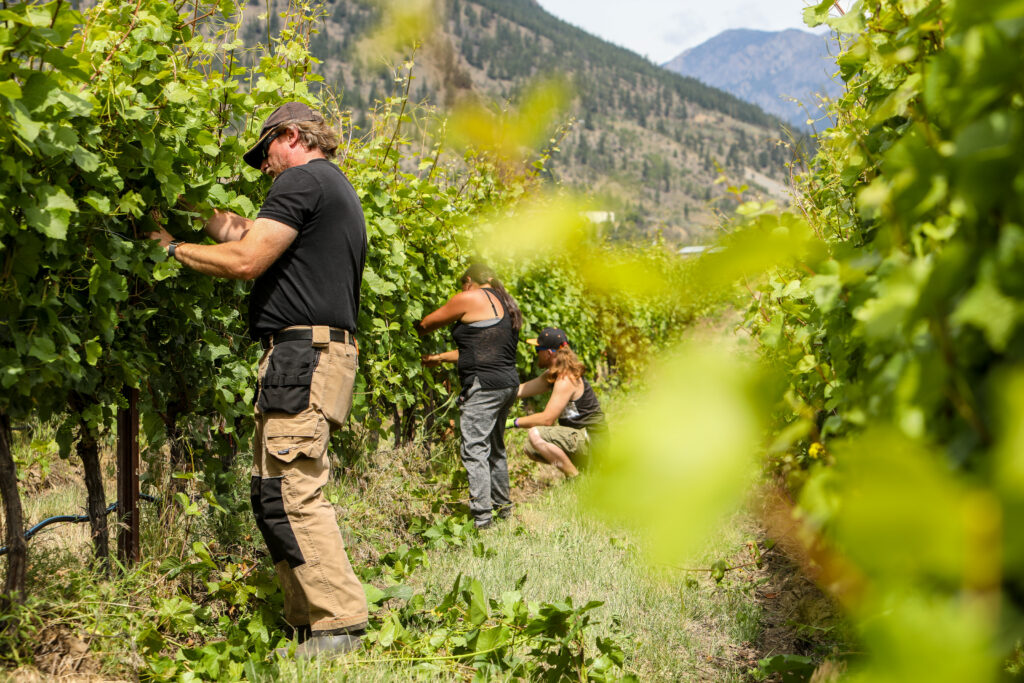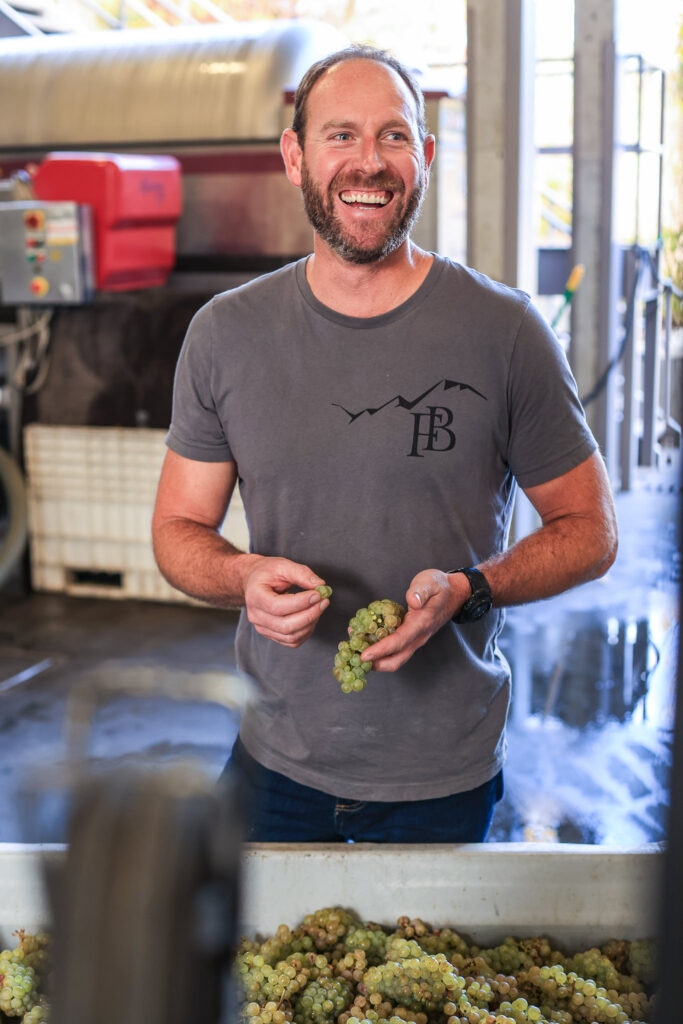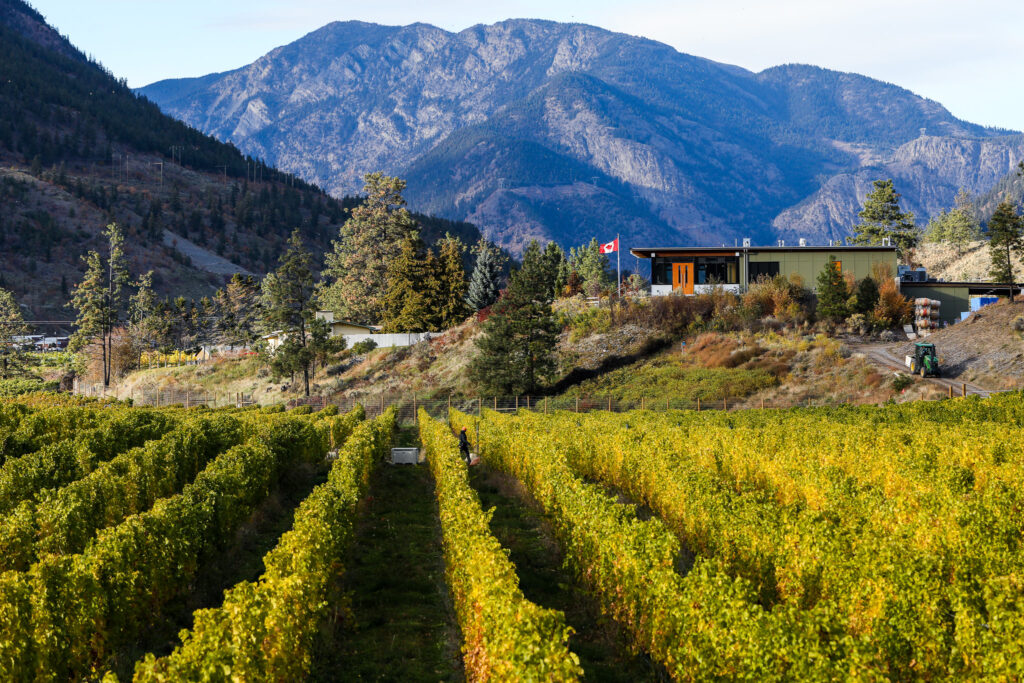Photos by Brad Kasselman
kasselmancreative.com
When Heleen Pannekoek and Rolf de Bruin came to Canada from the Netherlands with dreams of starting a winery, they initially assumed they’d join the numerous winemakers in British Columbia’s Okanagan Valley. Yet as Pannekoek recounts, Okanagan prices were higher than they had anticipated, and the late Harry McWatters, a pioneer in B.C.’s wine industry, suggested they look for more affordable land farther north. His advice led them to Lillooet. At the time, this small town, surrounded by mountains and located along Highway 99 between Whistler and Cache Creek, had five test vineyards and a farming community dating back to the Gold Rush era, but no commercial wineries.
Eckhard Zeidler wasn’t looking at Lillooet, either, as the place to launch his winemaking venture, initially doing test plantings on Salt Spring Island. But after his family settled in Whistler, he became intrigued by the Lillooet area, passing through the community on drives to the Caribou. When he tasted wine from an experimental vineyard owned by Lillooet’s then-mayor Christ’l Roshard, he says, “It was like a car accident where everything changes in a fraction of a second.” He made the decision then to find land and start a winery in Lillooet.
These budding Lillooet entrepreneurs all began planting grapes in 2009. Yet their businesses, Pannekoek and de Bruin’s Fort Berens Estate Winery and Zeidler’s Cliff and Gorge Vineyards, have evolved quite differently. And they’re each developing different strategies to deal with the area’s increasing climate challenges.
Lillooet’s climate is similar to that of the South Okanagan, with hot summer daytime temperatures, explains Fort Berens winemaker Alessandro (Alex) Nel. He arrived in Lillooet from South Africa in 2020 with his wife, Tammy Turck-Nel, who manages Fort Berens’ tasting room and wine club. Nel has worked in vineyards in various wine regions in countries around the world, none of which are comparable to Lillooet’s unique terroir. Here, nighttime temperatures are lower, making it possible to grow grapes with naturally high acidity, resulting in fresh-tasting wines.
The grapes that do best in Fort Berens’ 38 acres of vineyards are Riesling and Cabernet Franc, Nel says. Lillooet is one of the most northern grape-growing areas that can produce big red wines, and in addition to Cab Franc, Cabernet Sauvignon and Merlot do well. Fort Berens also grows Chardonnay, Pinot Noir and Pinot Gris, among others.

Zeidler notes that Lillooet’s hot temperatures have another advantage. “The biggest fungal threat to grape vines is powdery mildew, which loves the temperature range 23 to 28°C.” Hotter temperatures, which in Lillooet’s summer can top 40°C, make it more difficult for mildew to reproduce, reducing the need for chemical treatments, a factor that Zeidler considers critical to long-term sustainability. In France, while only 22 percent of the agricultural land is dedicated to grapevines, those vineyards account for nearly three-quarters of the country’s agricultural chemical use, he says. “This is not how I want to farm, and it doesn’t need to be that way.”
When Zeidler, a former investment banker, co-purchased the historic Texas Creek Ranch south of Lillooet, a 165.5-acre property that had been both a cattle ranch and a farm since at least the 1880s, he initially started a test vineyard of 37 grape varieties on a small parcel of land within the ranch. “You really don’t know what will work super well until you get it into the ground,” he says. Working with Valentin Blattner, a Swiss grape geneticist and breeder who specializes in fungus-resistant varieties, Zeidler brought in several different types of vines, which turned out to be not only disease resistant but also more winter hardy.
Last year was a devastating year for B.C.’s wineries. A severe January freeze damaged vines across the region, even worse, Zeidler says, than the hard winters of 2022 and 2023. “Initially, we didn’t know what kind of damage had been done to the grapevines themselves. We were pretty discouraged.” To help winemakers recover, the B.C. government implemented temporary measures that allowed wineries to make their 2024 vintage with grapes or grape juice sourced from outside the province.
Fort Berens opted to purchase grapes in the United States, partnering with Sagemoor Estates near Walla Walla, Washington, a location that grows grapes similar to those that thrive in B.C. Nel explains that they wanted to use these grapes to make wines in the same way they’d produce them in Lillooet, and they sent assistant winemaker Seth Jex south of the border to oversee production directly. The Washington grapes were picked, pressed and fermented before the Fort Berens team transported the unfinished wine back to Lillooet for aging and bottling. The resulting wines, dubbed “Here & There,” started in Washington but were finished in Lillooet and include a Riesling, a Pinot Gris, a Chardonnay and a Syrah rosé.

Despite the grapes’ U.S. origins, Nel says that “the minute we purchased the grapes, they were ours,” which meant that Fort Berens could use them to produce wines that tasted as close as possible to the styles they normally made. By buying these Here & There wines, he insists, “you are supporting a Canadian company. We are Canadian winemakers, Canadian owned.” And Pannekoek adds that despite the loss of grapes last year, they still managed to harvest some. “We will be bringing out 24 Lillooet wines, as well as Washington wines.”
Cliff and Gorge, a much smaller property than Fort Berens, did not suffer the same level of damage from the 2024 freeze that affected many of the province’s wineries, says Zeidler. This is because, after extremely cold, though less severe, winters in 2022 and 2023 harmed his fledgling buds, “what started out as a disappointing and disheartening experience has turned into the best thing that could have happened here. It forced us to completely rethink what we were doing,” leading the winemaker to replace most of the initial plantings in his 7.5-acre vineyard with winter-hardier Swiss varieties. Cliff and Gorge is currently offering six wines, including those made from Blattner-developed Petite Milo and Labelle grapes. Zeidler notes, “They were all grown here last year.”
The staff at both Lillooet wineries agree that the challenges they face, like the extreme weather conditions, trigger innovation. It’s part of what makes this official BC VQA so distinct as a dynamic and emerging wine appellation, alongside the small-scale, hands-on approach to winemaking. “We’ve only been here 16 years,” Pannekoek says. “It took the French and the Italians about a thousand years to figure out what grew best where.”

